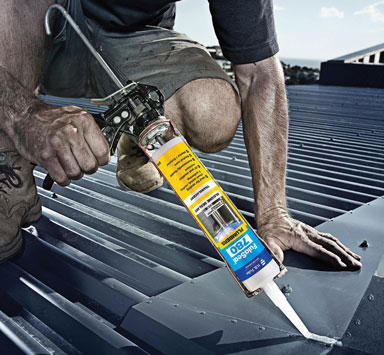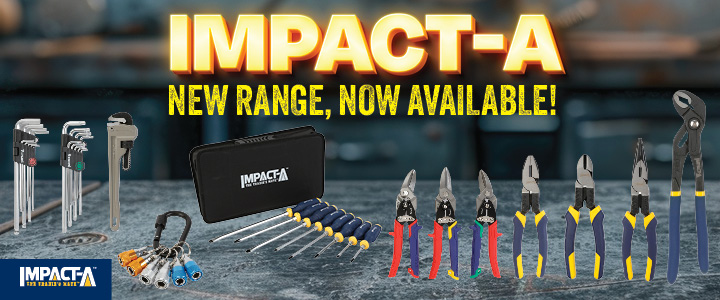A lot can go wrong if you don’t know your sealants and adhesives which is why it pays to do your homework first before you invest in a product.
Even when you’re 99 per cent sure you’ve made the right selection, the tricky thing with choosing a sealant or adhesive is that tiny bit of uncertainty can lead to a poor outcome. David Wheeler from Bostik says, “A few months ago, myself and a colleague visited a hotel at the Gold Coast Airport, where the wet areas had all been sealed with a Bostik silicone that had gone yellow within a few months of being installed,” he says.
The selection of the right product is hard when there are hundreds to choose from across a number of different manufacturers. And in this case, says Wheeler, the customer had used a neutral cure silicone which, for the most part, is correct. The reason it went yellow is because it was used in a bathroom pod, manufactured offsite and stored until it’s shipped. Neutral cure silicones, particularly light-coloured ones, will go yellow if they don’t have any UV on them Even though the builders used a sanitary grade silicone that’s fit for purpose in a bathroom, it didn’t perform as expected.
“If they’d have spoken to us, we could have told them to use a different sanitary grade sealant,” says Wheeler. “Even if they knew there was no UV exposure over a prolonged time, they may have decided to use an acetic-cure sealant instead,” says Wheeler. “But then if you switch to an acetic-cure sealant, you can’t use that on most ferrous materials, like metal taps and tapware, because acetic-cure has acid in it, which etches and damages the surface of ferrous metals. So you can’t use that either. It’s hard to put all of that information on a one-page selection chart for customers.”
And that’s just one product for one application. When it comes to adhesives and sealants, there thousands of products across multiple manufacturers in a hundred different channels. It’s just impossible to get it right.
SEALANT OR ADHESIVE?
So where do you start in choosing the right product? “The first thing you have to ask yourself is, do you want a sealant or an adhesive,” explains Scott Richards from HB Fuller. “Because there’s a misconception that they both do the same thing. A sealant is purely to seal two gaps to create a watertight seal or an air barrier. Whereas an adhesive is designed to combine or to cementify two substrates together.”
While that sounds like a blindingly obvious step, Kristopher Webb from Sika points out that it’s a surprisingly complex question. “We have products that are sealants and adhesives for example,” he says, “because in one particular application, a product might be only suitable as a sealant, but in the next application it might be suitable as an adhesive. For example, if you wanted to bond something quite light to a wall, you could probably use one of our products that would be considered a sealant. If you want to bond something heavy, then you would need to step that technology up and use an adhesive which is why sometimes you will see some products called a sealant/adhesive.”
Just using brand or technology to guide you isn’t always the best step either, adds Scott Richards.
“Silicone is probably a good technology to look at as an example. Everybody uses silicone. You have about 10 or 15 different types and grades of silicone, and some just fill a gap, whereas some have adhesive properties in there. Furthermore, sometimes certain brands will have subsectors and sub-brands off their main brand, but people’s perception is that one brand is one product. At HB Fuller we’ll have a product under a sub-brand, and it might have four or five different technologies under that, whether it be a fast grip or a high tack or a water-based, or acrylic-based. So we try and banner all our products into categories, but sometimes people get confused because they’ll think, ‘I’ll grab that Fuller’s FulaFlex product’, but we might have five different types of FulaFlex within that space.”
OTHER FACTORS TO CONSIDER
Choosing between your sealant or adhesive, then, is a matter of figuring out the right tool for the right job says Kristopher Webb. “I think the next question I’d like to know is what are the two substrates that you’re wanting to either seal between, or you’re wanting to bond together” he adds. “I would also then ask other factors related to the application such as, is it going to be exposed to external weather conditions including UV exposure? What’s the movement expectations? Is it going to be exposed to any chemicals? Will it be permanently immersed in water?”
The site of the application, and whether it’s internal or external, is of particular importance. “In Australia, it’s all about moisture content,” says Scott Richards. “A lot of sealants are moisture curing, so moisture has to be out of the air for the sealants to cure. When we look at acrylics, for example, it takes a lot longer because they’re water-based and water has to evaporate out of the sealant in order for it to cure. But a polyurethane or a hybrid technology, reacts differently.
“The difficulty for manufacturers like ourselves is that temperature, moisture and humidity can change so much. In Far North Queensland during winter, we’re still getting 30–32-degree temperatures, and high humidity during wet seasons. In Tasmania it was reported the other day they had minus 14 degrees overnight. You can’t really have different formulas for different states, so you’ve got to try and have a formula that can work within a large temperature range.”
Perhaps the most important question though, is what are you bonding? “A sealant or an adhesive can only be good as what the substrate is,” says Richards. “And if that substrate’s not back to bare state—so it doesn’t have any contamination or previous sealants or oils on it—you can’t expect the sealant to do what it’s supposed to do. When we offer advice, the key thing is the substrate, and we say the sealant’s only as good as the substrate.”
THE PRICE IS RIGHT
The next question people will invariably ask is, will this product do a good enough job for what I want? It’s human nature to choose the cheapest available product to do as good a job as possible, Richards says. “Let’s say we had decided an adhesive was needed in a situation,” he explains. “I would ask, ‘Are we talking a short-term bond or are we talking a full-term bond?’ The short-term bond may be cheaper, and everybody wants to try and pay as cheap as they can for a product.”
“The multiple options available and complicity of product selection is ultimately traceable back to price and suitable performance,” says David Wheeler from Bostik. “For instance, you could have a general all-rounder product that does a bit of everything and has a higher price point. However, you can always buy a lower performance product that covers less applications. On the other side, you can have products that are by design, very specific for an application and focus on key performance indicators. These tend to cost more as a result. Manufacturers tend to focus on core types of products or technologies.
As they are all different, the others in the market tend to cross over to a degree, leading to lots of differing options available to the end user. Another good example of complicated selection is when the application itself requires multiple performance standards to be met. For instance, an external joint that requires sealant. It needs to be UV resistant, meet trafficability requirements, be resistant to weather and meet expected movement requirements. Not to mention work with the type of joint design including the substrate material, the width and other requirements. Some technologies are great movement, but can’t withstand traffic for example. So selecting a product can be daunting. The ket point here is the applicator selecting the product is ultimately responsible for the installation. So selecting the right product is absolutely essential to a job well done.”
All reputable manufacturers of sealants and adhesives invest an enormous amount in their technology , and as a result, have a strong vested interest in offering training and advice to end users of their products.
“My advice to an end user, trying to decide on a product – call a reputable manufacturer you’ve heard of for advice,” says David Wheeler.
“And bigger companies like Bostik, we’ll test any product that we make with any substrate that you want to seal or adhere under our P.A.T.S program. A free service to our customers. We’ll test it and say, ‘Yes, this is correct’ or, ‘No, we don’t have a product’. Or we might say, ‘Here are three different options. It depends what you want from your product.’ Often, we’ll have multiple options for an application. We will test a substrate material, whether it be a plastic, concrete or a new type of system or substrate. We’ll test it and come back to you and say, ‘Here’s what we recommend for that application’. And we’ll give them a proper report and a warranty on that application. We’ll actually warrant that bespoke test. So I would recommend doing that.”






